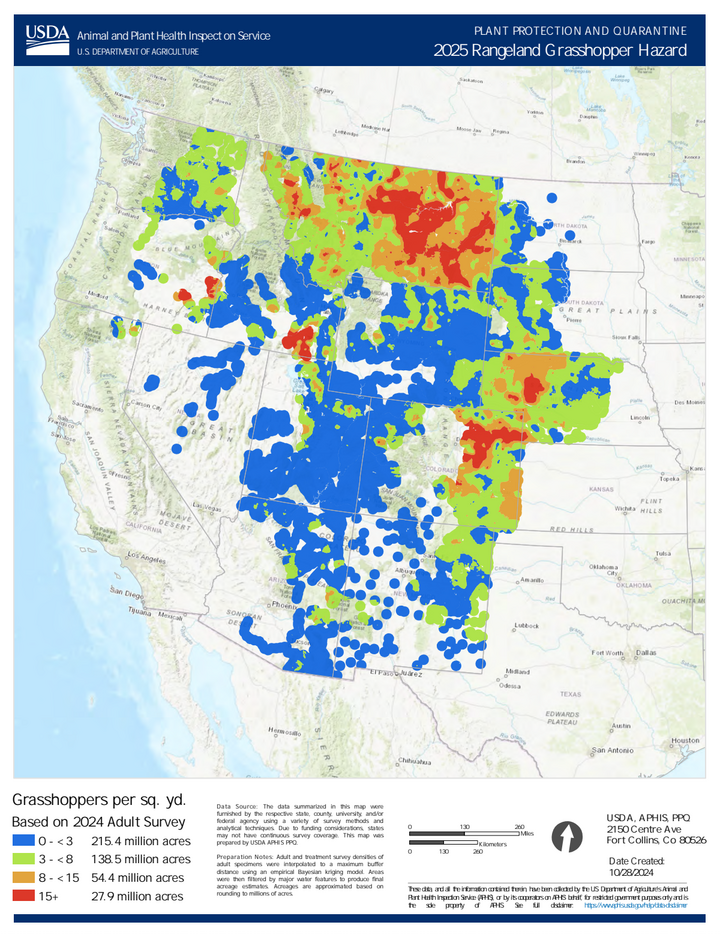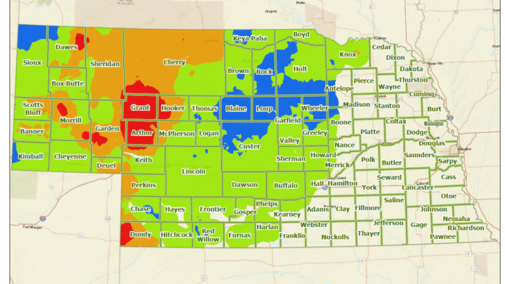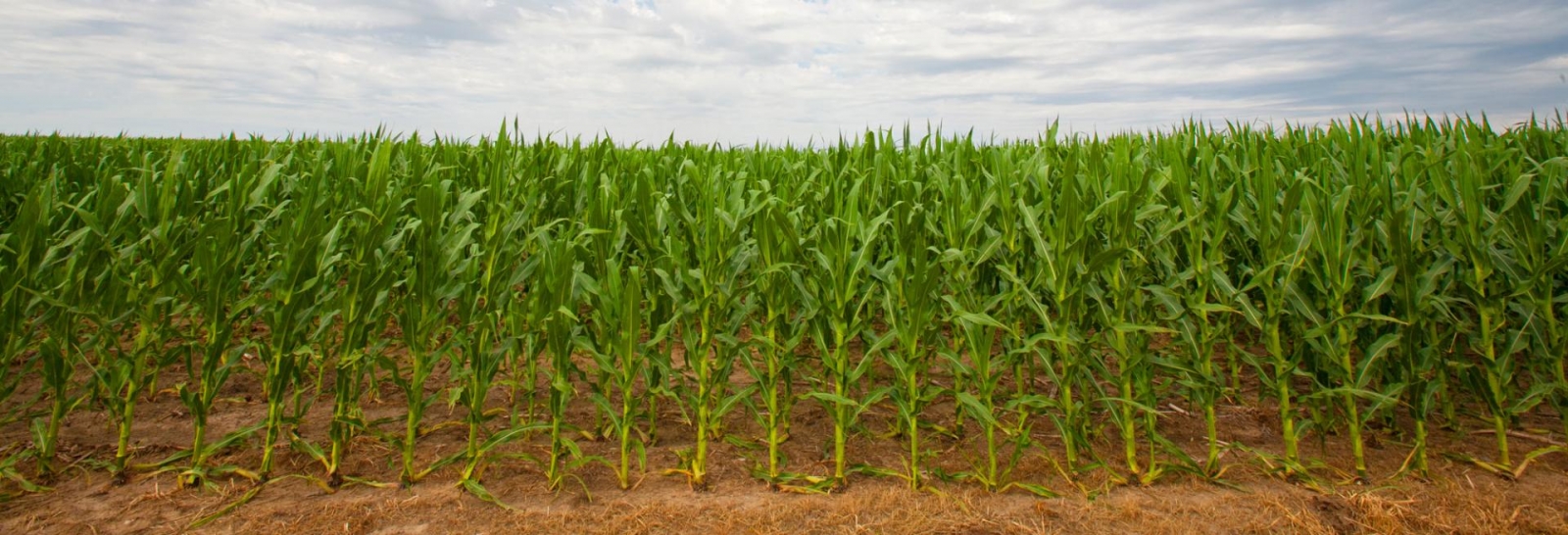Every year, USDA-APHIS conducts surveys of adult grasshoppers in the fall, and they use these numbers to estimate the risk for the next year. Based on its 2024 surveys, the predicted risk of grasshopper infestation in Nebraska rangelands will be moderate to severe in 2025, with a slightly higher risk in the western half of Nebraska (Figure 1). These reports indicate that much of the rangeland in the western United States is expected to have moderate numbers of grasshoppers (Figure 2).
Grasshopper numbers are responsive to environmental conditions; however, species differ in their response to precipitation, plant communities, soil characteristics and microclimate. A wet spring and rains at time of grasshopper hatching and development (mid-May through June) improves rangeland forage quality and reduces the loss from grasshopper infestation. Current weather forecasts have indicated warm and below-average moisture conditions, which could increase the risk of grasshopper injury.
Spotty occurrences of high grasshopper densities often occur throughout western Nebraska, even in low-risk years. Therefore, ranchers and range managers should maintain vigilance and monitor grasshopper densities during hatching periods. Producers are encouraged to scout fields and field edges beginning in late April or early May, when grasshoppers are still in the nymph stage and therefore easier to control.
For more on grasshopper scouting and control:
Grasshoppers Return ― It’s Time to Scout Field Borders
One of the best ways to scout for grasshoppers is to use the square foot method near field borders. Randomly select an area several feet away and visualize a one square-foot area around that spot. Walk toward this spot and count the number of grasshoppers you see in or jumping out of this area. Repeat this procedure 18 times and divide the total number of grasshoppers by two. This will give you the number of grasshoppers per square yard.
Economic thresholds for grasshoppers range from eight to 40 grasshoppers per square yard, depending on a variety of factors. Keep in mind that control is easiest before grasshoppers reach the adult stage. Check out CropWatch for more information on treatment options and learn more about grasshoppers of Nebraska here.


